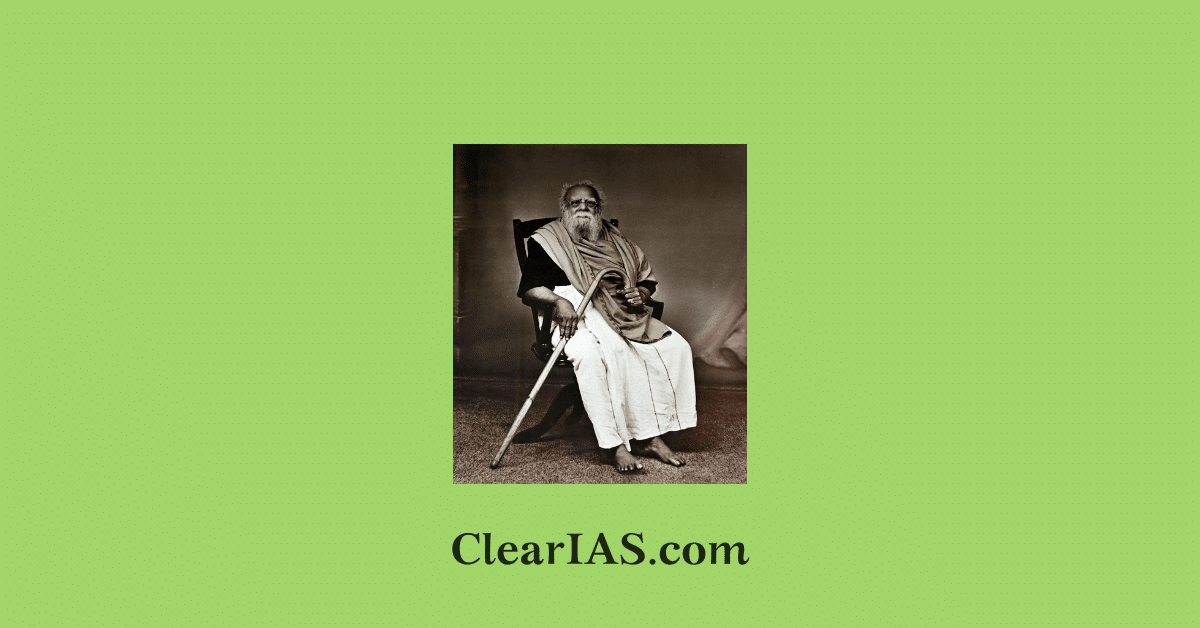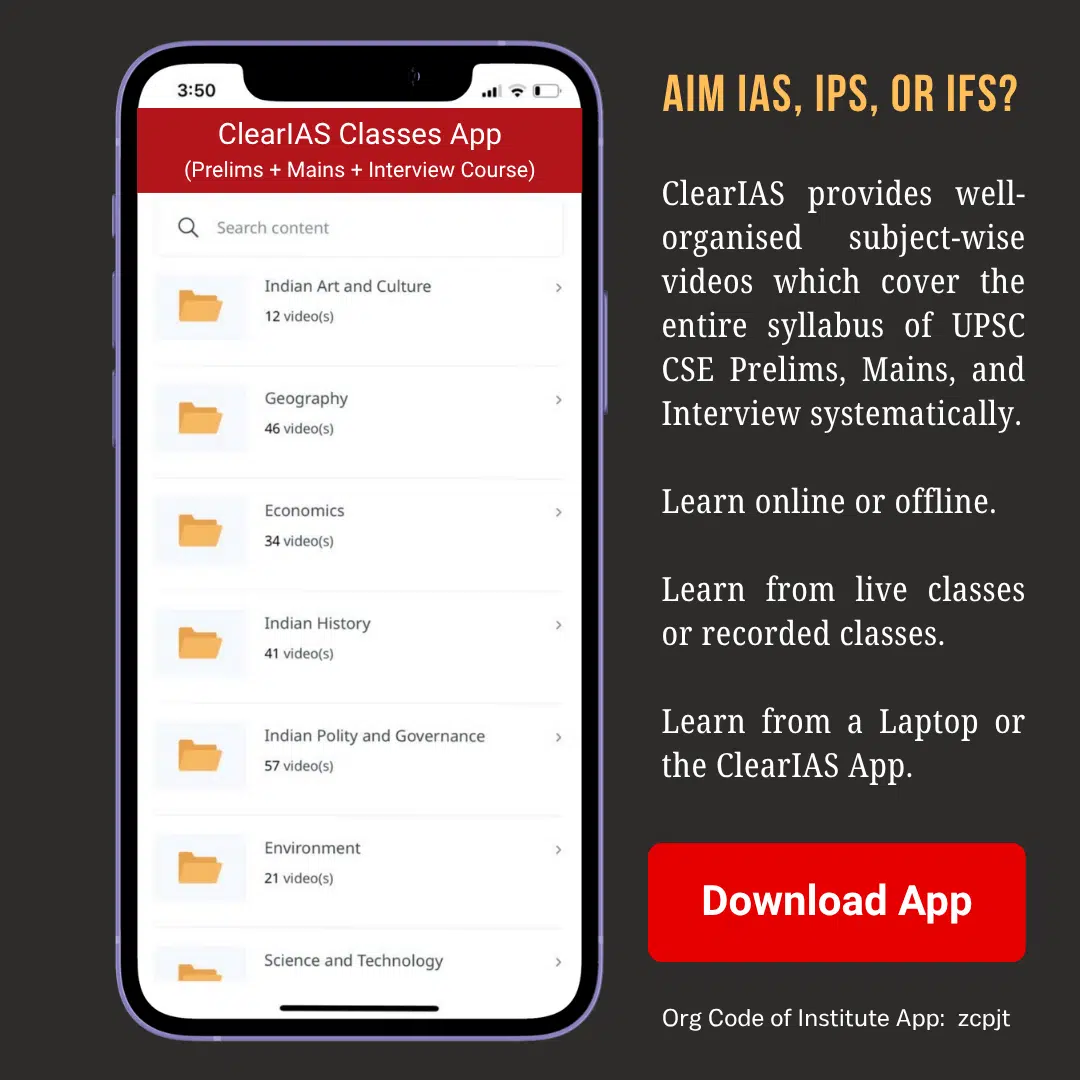
The year 2025 marks the centenary of the Self-Respect Movement, one of the most transformative social reform movements in modern Indian history. Read here to learn more.
Launched by E.V. Ramasamy “Periyar” in 1925 in Tamil Nadu, the movement sought to challenge the dominance of Brahminical traditions, dismantle caste hierarchies, and promote rationalism, equality, and self-respect among marginalised communities.
It left a profound legacy in Tamil Nadu, transforming not only society but also politics, culture, and gender relations, and laying the foundation for the Dravidian movement that continues to shape the region’s politics.
The Self-Respect Movement
The ideological foundation of the Self-Respect Movement was laid out in two pamphlets, Namathu Kurikkol (Our Principles) and Tiravitak Kalaka Lateiyam.
These writings articulated the core aims of the movement:
- Abolition of caste hierarchy and dismantling Brahminical supremacy.
- Promotion of rationalism, questioning mythology, rituals, and religious orthodoxy.
- Gender equality, ensuring equal opportunities for men and women in education, employment, and marriage.
- Social reforms, including widow remarriage, opposition to the Devadasi system, and eradication of untouchability.
- Discouraging religious orthodoxy, preventing the construction of new temples or mutts, and encouraging people to drop caste titles from their names.
- Focus on education and employment, with public resources directed towards uplifting marginalized groups.
- Building brotherhood and unity by eliminating untouchability and social barriers.
At its heart, the movement was a revolt against Brahminical hegemony in social, cultural, and political spheres.
Background of the Movement
The Self-Respect Movement arose against the backdrop of:
- Rigid caste hierarchy in Tamil Nadu, where Brahmins held disproportionate religious, social, and political dominance.
- Exclusion of non-Brahmin communities from education, administration, and cultural spaces.
- Inspiration from Jyotirao Phule’s Satyashodhak Samaj and B.R. Ambedkar’s anti-caste struggles, which emphasized social equality and rational thought.
Periyar, who left the Indian National Congress in 1925 due to its inability to confront caste discrimination, turned his attention to a radical social revolution through the Self-Respect Movement.
Role of Media
The movement effectively used print media to spread its ideology:
- Kudi Arasu, a Tamil weekly founded in 1924, became its principal propaganda organ.
- Periyar later started Viduthalai (Freedom) and Pakkutharivu (Commonsense) to articulate rationalist and anti-caste arguments.
These platforms questioned religious orthodoxy, Brahminical dominance, and gender inequality, shaping public opinion in Tamil society.
Women and the Movement
A striking feature of the Self-Respect Movement was its emphasis on women’s leadership and participation at a time when women’s voices were marginalized.
Two prominent leaders were:
- Annai Meenambal, who became the first woman to preside over the Self-Respect Conference.
- Veeramal, who actively campaigned for women’s rights and against caste oppression.
The movement also advocated for reforms such as widow remarriage and opposed the Devadasi system, positioning itself as a vehicle for promoting gender equality.
Key Features of the Movement
- Self-Respect Marriages
One of the most revolutionary contributions of the movement was the introduction of Self-Respect Marriages, which eliminated the role of Brahmin priests in Hindu weddings. These marriages were based on simple vows exchanged between partners, making the union egalitarian, rational, and cost-effective.
- In 1967, the DMK government in Tamil Nadu amended the Hindu Marriage Act to give legal recognition to Self-Respect Marriages.
- Opposition to Social Evils
The movement worked towards eradicating deep-rooted social practices that reinforced caste and gender inequality, including:
- The Devadasi system, which exploited women in the name of religion.
- Denial of education and public opportunities to non-Brahmins.
- Restrictions on widow remarriage and inter-caste unions.
- Self-Respect Conferences
The first provincial Self-Respect Conference was held in 1929 at Chengalpattu, presided over by W.P.A. Soundara Pandian.
- These conferences served as platforms for debates on caste, gender, and social justice, spreading Periyar’s ideas widely.
Significance and Legacy
The Self-Respect Movement was more than a social reform campaign; it was the foundation of Dravidian politics in Tamil Nadu.
Its legacy can be traced to the rise of parties such as the Justice Party, DMK, and AIADMK, which embedded social justice, rationalism, and welfare governance in Tamil Nadu’s political culture.
Key Contributions:
- Instilled dignity and self-respect among non-Brahmin communities.
- Fostered political consciousness that enabled marginalized groups to challenge upper-caste dominance.
- Shaped welfare-oriented governance, such as reservations, mid-day meal schemes, and social welfare policies in Tamil Nadu.
- Inspired rationalist and anti-caste movements across India.
Conclusion
The centenary of the Self-Respect Movement is a reminder of the enduring struggle against caste, patriarchy, and blind ritualism. By emphasizing rationalism, equality, and dignity, the movement redefined social and political life in Tamil Nadu and left an indelible mark on Indian democracy.
Today, as debates on caste, gender equality, and social justice continue, the Self-Respect Movement remains a beacon for progressive reforms and inclusive governance.
Previous year Questions
Q. Consider the following pairs: (UPSC Prelims 2019)
Movement/organisation |
Leader |
All India Anti-Untouchability League |
Mahatma Gandhi |
All India Kisan Sabha |
Swami Sahajanand Saraswati |
Self-Respect Movement |
E.V. Ramaswami Naicker |
Which of the pairs given above is/are correctly matched?
(a) 1 only
(b) 1 and 2 only
(c) 2 and 3 only
(d) 1, 2 and 3
Q. Who among the following was the founder of the ‘Self-Respect Movement?
a) Periyar E.V. Ramaswamy Naicker
b) Dr. B. R. Ambedkar
c) Bhaskarrao Jadhav
d) Dinkarrao Javalkar







Leave a Reply